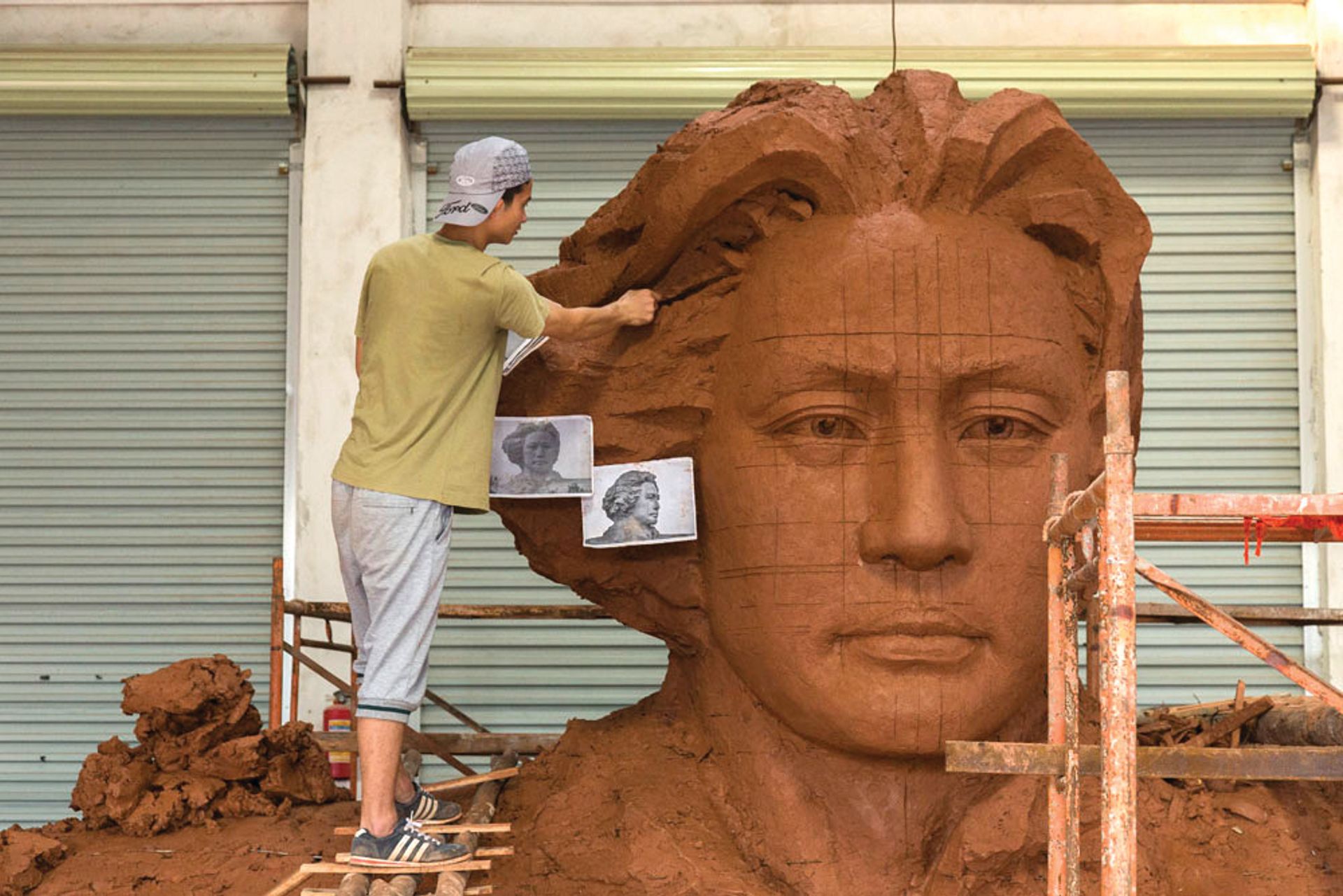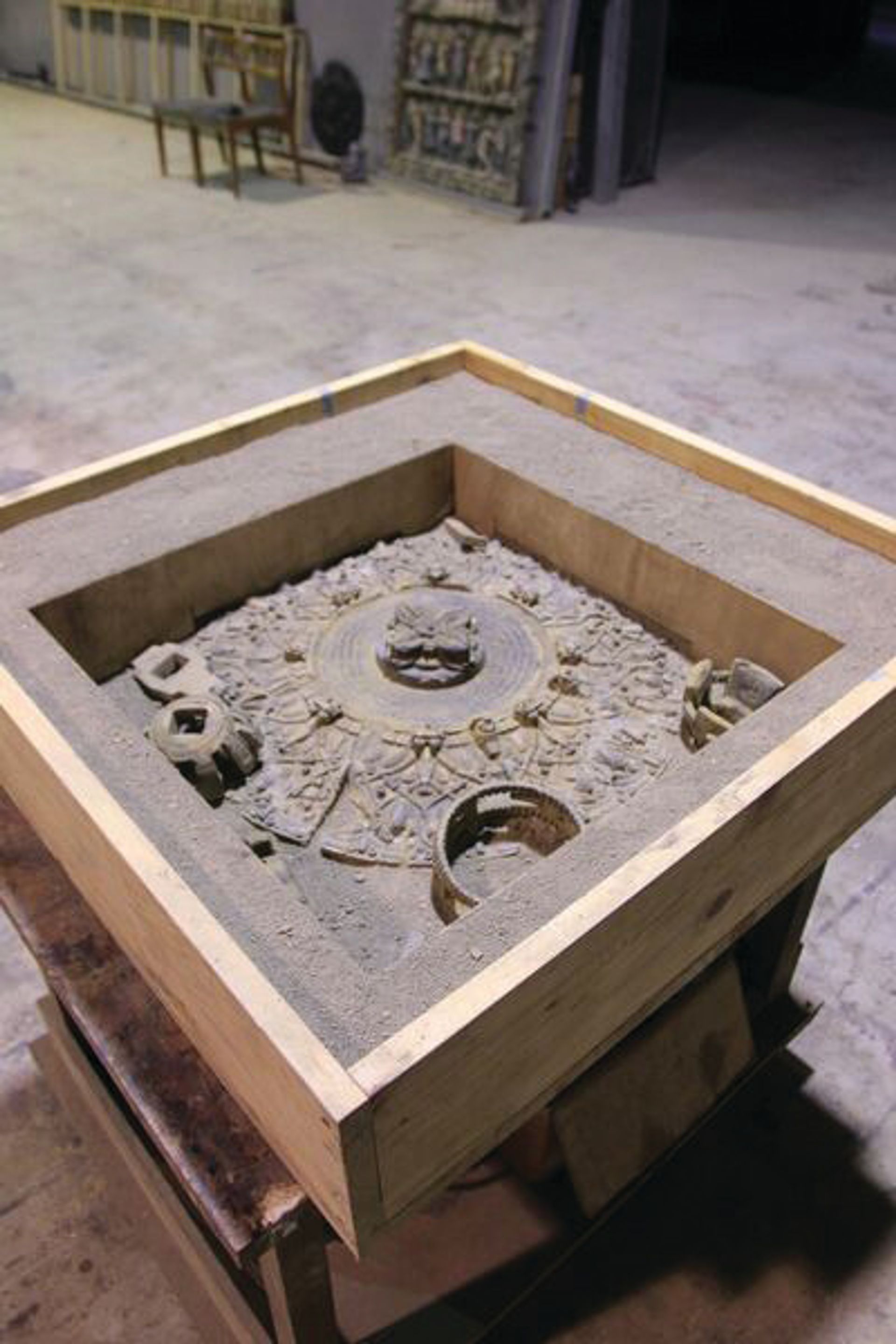The process of commissioning contemporary art is a complex one. Whether it is seeking advice from experts at Kew Gardens about the types of paint that can be applied to trees without damaging them, reproducing historic protest routes onto the Sussex landscape in chalk, or creating mock architectural digs for a fictional civilisation, the resourcefulness and collaborative spirit of artists and curators are increasingly tested as the language of contemporary art expands.
These examples are among the challenges faced by Cass Sculpture Foundation as it has embarked on its most ambitious series of commissions to date. Seventeen new works are being produced by contemporary artists from Greater China for a new exhibition, A Beautiful Disorder, opening at the Foundation, in the West Sussex countryside near Chichester, in May 2016.
In September, a new work by the Beijing-based artist Zhao Yao will be previewed at the West Bund Art & Design Fair in Shanghai (9 to 13 September). It exemplifies some of the unusual challenges when commissioning large outdoor sculpture. A Sculpture of Thought I-192 is constructed from the plastic used to make children’s playground equipment, which is typically cast and assembled in specialised factories. Zhao worked with a local Chinese fabricator to source material, develop a process for making the sculpture and produce moulds and a structural frame specific to this work. He then worked with the fabricators to develop a custom design to fix the work to the ground in a way that would not compromise its aesthetic.

Later this year, A Sculpture of Thought I-192 will travel to the UK for display alongside the 16 other works, many of which are still in production. Making them for the pastoral English countryside provided conceptual opportunities but also presented practical challenges for the artists and curators. Some of the artists had never created sculpture before and were encouraged by the curators to make proposals for A Beautiful Disorder. Cui Jie, a Beijing-based artist, works mainly in painting and drawing. Working with the curators and the fabricators, Cui has developed her first large-scale sculpture, Pigeon’s House, a three-dimensional exploration of the architectonic forms of contemporary Beijing that have dominated her paintings. Other artists, such as Song Ta and Xu Zhen, have proposed works with complex installation methods that were new for the Cass team.
By the time the exhibition opens in 2016, the commissioning process will have been underway for two years. Early in 2014, Ella Liao, Wenny Teo and I, the curators of the exhibition, established a long list of contemporary artists from Greater China. We visited the artists’ studios to learn more about their work and to discuss the exhibition concept, the commissioning process and to invite them to make proposals.
Later that summer, the artists submitted rough proposals containing drawings, descriptions of the work and estimated production budgets. The proposed works explored the parameters of traditional sculptural practice as well as addressing cultural, political and social concerns in contemporary Chinese society. From these ideas we were able to establish a shortlist of artists whose works responded most appropriately to the curatorial brief and to the site.
The shortlisted artists were invited to visit Cass Sculpture Foundation during the autumn and winter. Here they were able to familiarise themselves with the bucolic landscape, the sculptures on display and the local area. They also visited Cass’s archive containing drawings and maquettes that provide a historical overview of sculptures proposed and commissioned throughout the Foundation’s 23-year history.
Some of the artists, such as Cheng Ran, drew direct inspiration from this site visit. Normally working in film, he was inspired during his visit on a dark and gloomy day in February. Walking through the grounds, he caught a glimpse of the sun shining through a clearing in the most spectacular way, recalling a scene from a film that he could not recall, or may not even exist. Cheng Ran decided to install his own beam of light to produce a purpose-built set. Early next year he will create a film, entitled Crossroads, in the grounds. The scenes of this film will feature actors crying, sleeping or appearing lost in the crossroads. These scenes will take place under this beam of eternal sunshine, regardless of the surrounding weather.
Following the site visits, the shortlisted artists were asked to create maquettes. The maquette stage is crucial, allowing the artist to consider the three-dimensional nature of the work and emphasise the importance of scale, materials and structure. In December 2014, the curators visited the artists in their studios to see the maquettes and discuss the practicalities of fabricating their works.
Once we had approved the maquettes, Derek Pullen, a trustee of Cass Sculpture Foundation and the former head of sculpture conservation at the Tate, visited to the artists’ studios in China. He provided invaluable expertise and advice to the artists on structural concerns, assembling the work and material durability, as well as maintenance. He suggested modifications based on the maquettes, changes that were incorporated into the large-scale works.
Commissioning is often a collaborative process and these 17 works have been no exception. It is crucial that each final work is produced to the highest quality without compromising the artist’s vision. Song Ta’s Why Do They Never Take Colour Photos is a reproduction of a sculpture of the young Chairman Mao, located in Changsha, Hunan Province. Song Ta wanted the sculpture and the surrounding landscape to be painted in shades of grey, to recreate the atmosphere of a historical photo. This required consulting with an expert at Kew Gardens to find a material that would achieve this and would be ecologically sensitive. We tested several possibilities and are now in the process of finding a suitable application method.

During the technical planning stage, budgets and timelines were established together with fabricators and transporters to finalise material considerations and to confirm the scale and weight of the works. Once the technical details were established, commissioning contracts were signed between the artists and Cass Sculpture Foundation. These contracts detail the works, their budgets and establish the edition numbers for the works.
The works then entered the production phase. In the case of Song Ta, a replica of the chairman Mao sculpture was produced in clay and a mould was made. The final sculpture was then cast in fibreglass.

The Taiwan-based artist, Tu Wei-Cheng has proposed a work that will manifest as an archaeological dig site based around the fictitious Bu Num civilisation. In July 2015 Tu conducted a workshop at Cass Sculpture Foundation with local participants to gather material for his work. Participants in the workshop brought small objects—both sentimental and incidental—to be cast. The objects included old mobile phones, seashells, baby shoes, door handles, teddy bears, among other things. The plaster casts will be incorporated into the final bronze work, which will be installed in five archaeological dig sites on the grounds at Cass.
Xu Zhen by MadeIn Company will create a new variation of his site-specific work, Movement Field, a maze of pathways of differing sizes. Each path is a replica of a historical protest route, reconstructed using Google Maps and reproduced at varying scales in paths of chalk, a local material. For this work, it was necessary to survey the whole of the grounds and plan how the pathways would be installed to determine the quantity of chalk required for such a large-scale installation.
The newly commissioned works will be transported to the UK in January 2016, to allow time to complete groundworks and installation during Cass’s winter closure period. This will be the most extensive installation ever undertaken on the West Sussex site, and many of the artists will participate in the installation of their works.
Before the end of 2015, the artists, curators, fabricators, transporters and installers will continue to work collaboratively to realise sculptures that started out as rough ideas on paper a couple of years ago. These new works demonstrate a variety of new perspectives on the cultural, political and social landscape of contemporary China, as well as expanding approaches to traditional definitions of sculpture. It is a complex process indeed, but one we hope will result in genuinely groundbreaking work.
Claire Shea is the curatorial director of the Cass Sculpture Foundation in West Sussex, UK

